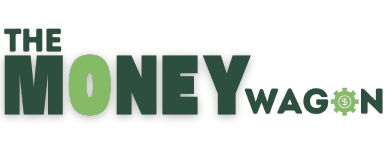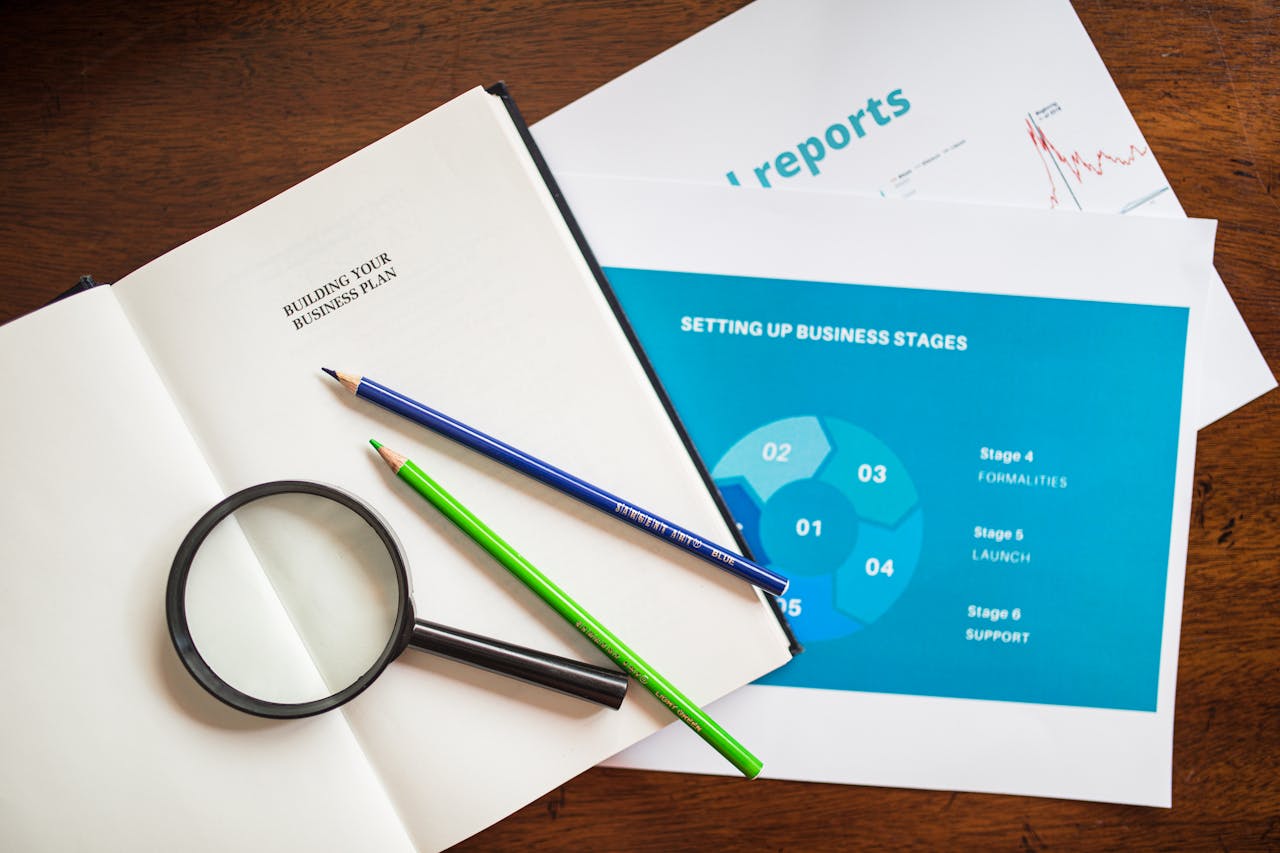Your Plan = Your Roadmap
Starting a business in the U.S. is exciting—but it can feel overwhelming. A business plan is your roadmap. It helps you organize your ideas, estimate costs, set goals, and talk confidently to lenders or investors. Think of it like planning a road trip: you still might take detours, but a clear route helps you get there faster and smarter.
This guide walks you through 15 simple sections you can use to build a complete, U.S.-ready business plan. We real-life tips, and a quick example in each step so you can move from idea to action.
Table of Contents
Step 1: Executive Summary
Keep It Short, Make It Strong
What it is: A one-page snapshot of your entire plan.
What to include: business name, what you sell, who you serve, why you’ll win, quick money highlights (revenue targets, funding needs).
Plain-English example (coffee cart):
“Sunrise Sips LLC is a mobile coffee cart serving office parks in Austin, Texas. We offer premium espresso drinks and fast service for busy professionals. We’ll launch with one cart, expand to three in 18 months, and target $220,000 in annual revenue by Year 2. We’re seeking a $65,000 startup loan for equipment, licensing, and working capital.”
Pro tip: Write this last. It’s easier after you’ve done the rest.
Step 2: Company Description
Who You Are & Where You Fit
What it is: A clear picture of your business.
What to include:
- Legal structure: Sole Prop, LLC, S-Corp, or C-Corp (and why you chose it)
- Location: city/state, physical vs. online
- Industry: what space you’re in and where you fit
- Mission & vision: why you exist, long-term goal
U.S.-specific tip: Register your business with your state, get an EIN (Employer Identification Number) from the IRS, and open a separate business bank account. This keeps your finances clean.
Step 3: Market Analysis
Know Your Playing Field
What it is: Your proof that customers exist—and you understand them.
What to include:
- Target audience: age, income, location, habits
- Market size & trends: who’s buying and how the trend is moving
- Competitors: list 3–5 direct competitors; note their pricing, strengths, and gaps
- Your position: what makes you different (faster, cheaper, better, niche focus)
Beginner tools: Google Maps (local competitors), Google Trends (search interest), customer interviews (5–10 calls go a long way).
Example for coffee cart:
“Target: office workers (24–55) in North Austin. Competitors include two cafés 0.5 miles away; both have long lines at peak times. Our edge: mobile location outside office buildings, 3-minute average wait, and subscription coffee passes.”
Step 4: Organization & Management
Who Does What
What it is: The team and structure that make your business run.
What to include:
- Ownership: who owns what percent
- Roles: CEO/Founder, Operations, Marketing, Finance
- Advisors/contractors: bookkeeper, attorney, marketing freelancer
- Org chart: simple diagram helps (even if it’s just you + part-time help)
U.S.-specific tip: Keep basic job descriptions and an onboarding checklist. It helps with hiring and keeps you compliant with labor rules.
Step 5: Products or Services
What You Sell & Why It Wins
What it is: Your offer, explained clearly.
What to include:
- Features & benefits: what it does + why it helps
- Pricing: how you set prices (cost-plus, market-based, value-based)
- Delivery: how customers get it (in-person, shipping, digital)
- Lifecycle: seasonal items, upsells, warranties, subscriptions
Example:
“Signature espresso, cold brew, and seasonal drinks. Subscription: 20 coffees/month for a set price. Add-ons: baked goods from a local bakery.”
Step 6: Marketing Strategy
Get Found, Get Chosen
What it is: How people will discover and trust you.
What to include:
- Brand basics: logo, colors, voice
- Website & SEO: clear homepage, service pages, local SEO (Google Business Profile)
- Social media: consistent posts, location tags, customer photos
- Email & SMS: weekly promotions, loyalty offers
- Advertising: small tests (e.g., geo-targeted ads near your service area)
U.S.-specific tip: Set up your Google Business Profile and ask happy customers for reviews. Reviews drive local traffic.
Step 7: Sales Strategy
Turn Interest Into Revenue
What it is: Your plan to convert leads into paying customers.
What to include:
- Sales funnel: awareness → interest → purchase → repeat
- Tactics: demos, trials, bundles, referral discounts
- Retention: loyalty program, punch cards, VIP tiers
- Tools: CRM (even a spreadsheet to start), automated follow-ups
Example:
“Offer a ‘first cup free’ during launch week. Promote a referral card: refer 3 friends, get a free latte. Sell prepaid passes for faster checkout.”
Step 8: Operations Plan
How the Work Gets Done Daily
What it is: The behind-the-scenes system.
What to include:
- Daily and weekly routines: opening/closing checklist, inventory checks
- Suppliers & logistics: who supplies you, delivery schedules, backups
- Technology: POS, accounting, scheduling, inventory tools
- Facilities: location, layout, equipment list
- Staffing: headcount by shift, training, safety protocols
U.S.-specific tip: Keep health and safety guidelines handy if you serve food/beverages. Check your county’s requirements.
Step 9: Financial Plan
Simple, Honest Numbers
What it is: Your money map.
What to include:
- Startup costs: licenses, permits, equipment, initial inventory, insurance, branding, first 3 months of expenses
- Revenue forecast: monthly for Year 1, then quarterly for Years 2–3
- Expenses: fixed (rent, insurance) and variable (inventory, shipping)
- P&L (Income Statement): revenue – expenses = profit/loss
- Cash flow: when money actually comes in and goes out
- Break-even: the sales needed to cover all costs
Beginner tip: Be conservative with sales and generous with costs. It’s better to be pleasantly surprised than short on cash.
Step 10: Funding Request
Optional, If You’re Raising Money
What it is: A clear ask for outside capital.
What to include:
- Amount needed: e.g., “We are seeking $65,000.”
- Use of funds: equipment, inventory, marketing, working capital
- Type: loan (bank, credit union, SBA-backed), line of credit, or equity investment
- Terms you prefer: interest rate range, repayment period (if loan)
- Repayment plan: how cash flow will cover payments
U.S.-specific tip: If you’re approaching lenders, organize: last 3 months of bank statements, personal financial statement, basic projections, and your plan. Explore SBA-backed options like 7(a) or 504 with your lender.
Step 11: Risk Analysis
What Could Go Wrong—and Your Plan B
What it is: Show you’ve thought it through.
What to include:
- Market risks: demand changes, new competitors
- Operational risks: supplier delays, equipment breakdown
- Financial risks: slower sales, higher costs, interest rate changes
- Mitigation: backup suppliers, maintenance plan, cash buffer, insurance
Example:
“Maintain two suppliers for beans; keep a 10% monthly cash reserve; quarterly price review to protect margins.”
Step 12: U.S. Legal & Compliance Checklist
Start Clean, Stay Clean
What to include:
- Business registration: with your state (LLC, Corp, etc.)
- EIN: from IRS (for taxes and banking)
- Licenses & permits: state/county/city requirements (especially health permits if food/beverage)
- Sales tax registration: if applicable in your state
- Insurance: general liability; workers’ comp if you have employees; industry-specific coverage
- Contracts & policies: vendor agreements, refund policy, privacy policy if you collect customer data
- Employment basics: I-9/W-4 forms, payroll setup, overtime rules, anti-discrimination policies
Pro tip: Keep a compliance folder—digital or physical—with copies of everything. Update it twice a year.
Step 13: Growth & Scaling Plan
From First Win to Next Win
What it is: Your expansion path.
What to include:
- Milestones: “Cart #2 by Month 12,” “Break even by Month 8”
- New products/markets: catering, corporate events, seasonal specials
- Systems: standard operating procedures (SOPs), training manuals
- Capital for growth: when/why you’ll raise more funds
Example:
“Add a second cart after 9 consistent profitable months. Launch cold brew subscription for offices. Pilot weekend farmers’ market slots.”
Step 14: KPIs
The Scoreboard You’ll Actually Check
What to include (pick 5–7 to start):
- Monthly revenue
- Gross margin %
- Average order value (AOV)
- Customer acquisition cost (CAC)
- Customer retention rate (CRR)
- On-time fulfillment %
- Website leads or foot traffic
Beginner tip: Review KPIs on the 1st business day of each month. Note what went well, what changed, and one action to improve.
Step 15: Appendix
Keep It Tidy
What to include:
- Resumes or short bios
- Sample menus, product sheets, or photos
- Detailed financial spreadsheets
- Licenses, permits, insurance docs
- Letters of intent (e.g., a landlord or corporate client)
- Any research or survey summaries
Quick Tips to Make Your Plan Shine
- Write like you talk. Plain language beats jargon.
- Keep it skimmable. Use headings, short paragraphs, bullet points.
- Be realistic. Lenders prefer honest numbers over optimistic guesses.
- Update regularly. Revisit your plan every 6–12 months or after big changes.
- Save versions. Keep a dated copy each time you update.
Common Mistakes to Avoid
- Skipping the market check. Talk to at least 10 potential customers.
- Underestimating costs. Add a buffer (10–15%) for “unknowns.”
- No marketing calendar. Consistency beats random promotions.
- Mixing personal and business money. Separate accounts from day one.
- Forgetting permits. Local rules can stop you before you start.
Free Tools and Downloads
At TheMoneyWagon, we know you need practical resources, not just advice. Here’s what you can download right now:
- One-Page Business Plan Template – Perfect for beginners starting simple. Use this to draft quickly, then expand each section in your full plan.
- Business Name & Location:
Mission (1–2 sentences):
Vision (1–2 sentences):
Legal Structure (LLC/S-Corp/C-Corp/Sole Prop):
Target Customer (who/where/why they buy):
Top 3 Competitors & Your Edge:
Offer (what you sell, price range):
Marketing (website/SEO, social, reviews, email):
Sales (offers, funnel, retention):
Operations (suppliers, tools, team, hours):
Startup Costs (list + total):
Year-1 Monthly Revenue Goal:
Break-Even Point (units or $):
Funding Needed (if any) & Use of Funds:
Top 5 KPIs:
Next 3 Milestones (with dates):
- Business Name & Location:
- 15-Section Business Plan Template – A ready-to-edit Google Docs or Word version.
- Financial Forecast Spreadsheet – Includes formulas for revenue, expenses, cash flow, and break-even.
- Investor Pitch Summary Template – A one-page version to impress lenders or investors.
FAQs
How long should my business plan be?
10–20 pages is common. Focus on clarity, not length.
Do I need a plan if I’m self-funded?
Yes. It keeps you focused and helps you spot issues early.
Is an LLC right for me?
LLCs are popular for liability protection and flexible taxes. Talk to a local pro to pick what fits your situation.
What numbers do lenders care about most?
Cash flow, break-even timing, and your ability to repay. Clear, realistic projections help.
How often should I update my plan?
Every 6–12 months—or right after any major change (new location, new product, big cost shifts).
Final Words: Start Simple, Learn Fast, Keep Going
Your first plan doesn’t have to be perfect. It just has to be real and usable. Start with the one-page template above, talk to a few customers, tighten your numbers, and then build out the full document. The more you work the plan, the more the plan works for you.
Next step: Copy the one-page template, fill it out today, and save it as “Version 0.1.” Then schedule a 60-minute block this week to build Sections 1–5. You’ve got this and we are here to help you make smarter money moves, one simple step at a time.


